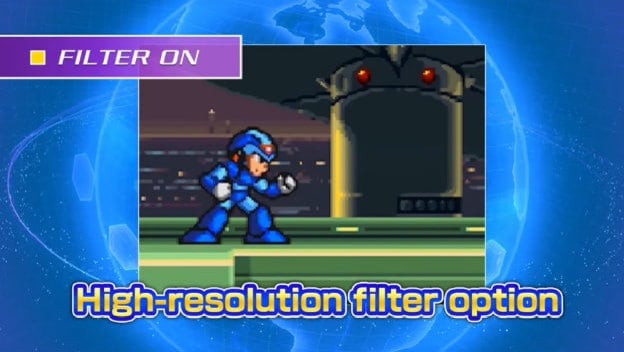I need to get something off my chest. Thank goodness I have this platform, because otherwise I’d be finding some message board to dump this one, and looking like a giant, doofus nerd for free. I’m a… retro gamer, for lack of a better turn of phrase. I think old video games are cool, I like to collect them, I like to read about them, the whole deal. I’m not wild enough to seek out CRT monitors, RGB adapters and the like, but I do have a collection, a knowledge base, and a clone console. I care about how my games look, and do what I can within financial reason to make sure my classic gaming experience is high quality.
But I also like to pick up official releases. You know, the collections, the remasters, the HD revamps. In those games, I’m seriously getting tired of something super specific. The visual filters. Almost every re-release has them, and they’re pointless, and all they do is piss people off, sometimes to extremes.
Two recent events really made me realize how awful, how wasteful, and how pointless visual filters are on old games. First, Capcom’s Mega Man X Legacy Collection . In the middle of the trailer, Capcom shows off the game’s “high resolution” visual filter as if it’s some kind of marquee addition to the franchise. The best part is, there’s a comparison shot with the filter on and off. When it’s off, the game looks incredible. The colors are bright and the pixels look razor-sharp. Even the later 3D games get a visual boost, with a higher resolution getting rid of the old PS2 fuzz. But the filter… good lord, what a travesty.
All these filters do is make the image look like somebody smeared Vaseline all over their screen. The pixels turn into these smudgy lines that bleed all over each other, not only ruining the pixel art, but making the whole thing just plain ugly. It’s like there’s this fear that modern gamers, in 2018, will run in fear of pixels (despite indie and even AAA games with pixels being extremely popular) and the option to completely destroy the image somehow makes Mega Man or Chrono Trigger more marketable.
Yeah, it’s time to talk about Chrono Trigger now. Square Enix has released that game, which is inarguably one of the greatest games of all time, on multiple platforms with little issue. It’s on Super Nintendo, DS, and PlayStation, and the worst thing to happen to any of those is some bizarre load times on the latter. But the game came to mobile, and some adjustments (understandably) had to be made for it to be more playable on that platform. But then Square Enix updated it a bit, and ported it directly to Steam. Then all hell broke loose.
Chrono Trigger launched on steam with the worst retro visual filter in all of gaming history. Not only did it suffer from washing out all the color and destroying the pixel art, but the filter appeared to be applied to the game’s assets on a tile-by-tile basis. If you don’t know, most JRPG assets, especially those for scenery, are built of individual squares that are patched together to make bigger pictures. This filtering was so bad, it made the seams between the tiles visible. Holy crap. That level of disrespect towards a game that is straight-up lionized in the gaming canon was cause for outrage, even more so than similarly botched ports of Final Fantasy V and VI . It was so bad, Square Enix had no choice but to not only respond, but spend further time and resources to fix it. Recently, a patch was introduced to allow a visual toggle, as well as various font and UI changes to make the Steam version look less like a blown-up mobile game. And more patches are on the way. Patches ain’t cheap, either.

So what’s the point of these damned filters? Sure, most of them don’t spawn the level of seething hatred Chrono Trigger did, but in that case it was also mandatory. But still, even as an optional feature most people will never touch, it just feels so careless, and disrespectful to the original developers and artists. Even the Mega Man trailer only briefly showed the filter, and the entire rest of it showed the games in their purest state, at the normal 4:3 resolution. That’s how those games were made, and that’s how they need to be displayed and preserved when re-released.
It’s okay to treat old games like they’re still valuable, in every way. In fact, the way games are presented by publishers helps shape the way the audience perceives them. That’s why nobody wants to pay money for first-party Sega Genesis games anymore. Classic games are called “classic” for a reason. Let’s treat them that way.
